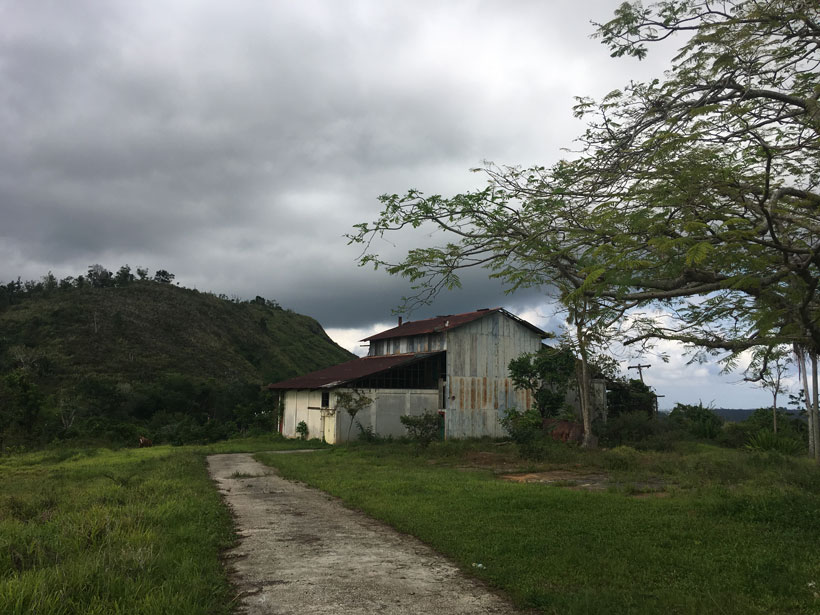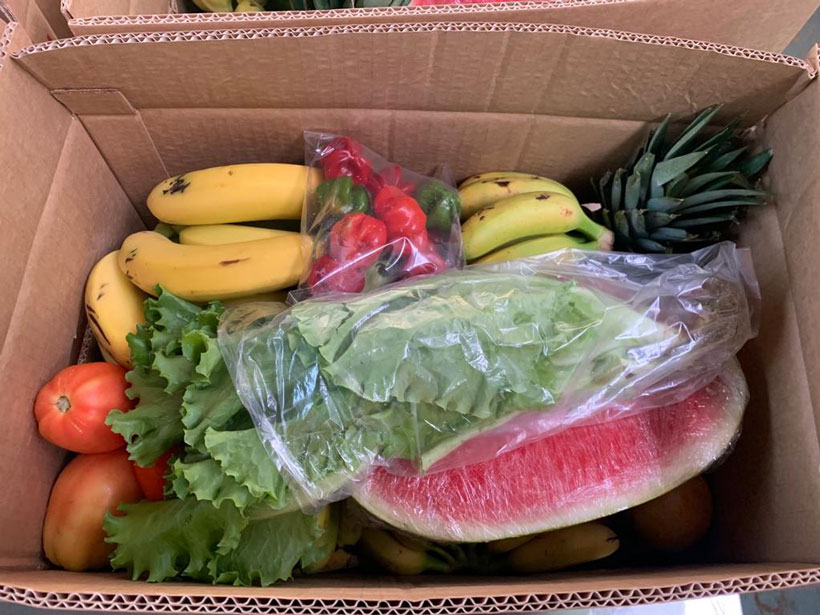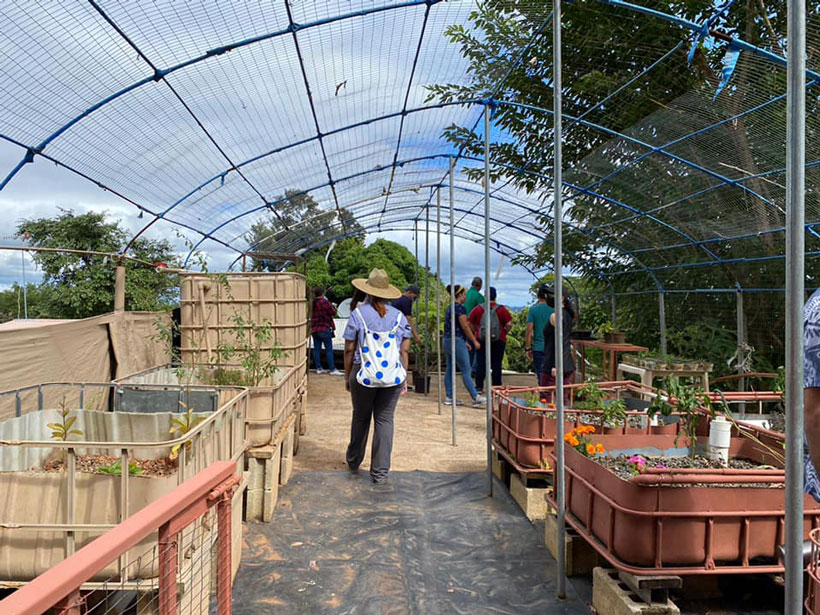
When Hurricane Maria hit Puerto Rico on 20 September 2017, it swept through an already glitched infrastructure that had been battered by Hurricane Irma just 2 weeks before.
Crossing Puerto Rico from southeast to northwest, Maria was, according to a NOAA report, “by far the most destructive hurricane to hit Puerto Rico in modern times.” U.S. Geological Survey (USGS) researcher Lindsay Davis agreed: “It is possibly the most devastating hurricane to hit the island since San Ciriaco in 1899.”
Since meteorologists started keeping detailed weather records for the island in 1956, Puerto Rico has seen 129 tropical cyclones. According to a 2019 study, climate change strengthened precipitation caused by Hurricane Maria and is potentially making extreme rainfall more frequent, as the island is 5 times more likely to be struck by such downpours today than it was decades ago. A hotter atmosphere and higher sea surface temperatures could be among the culprits for stronger storms and hurricanes in the Atlantic Ocean.
“Puerto Rico will be vulnerable to hurricanes like Maria and impacts such as landslides in the future,” said Jonathan Godt, director of the USGS Puerto Rico Landslide Hazard Mitigation Project.
Hurricanes and Landslides
More than 70,000 landslides happened in the wake of Hurricane Maria in Puerto Rico. Besides the intensity of the hurricane-caused rainfall, the composition of the soils in Puerto Rico also might make landslides more common. “Many more elements are at play here, but clay-rich sedimentary rock and shales are not very stable and are quite susceptible to landslides,” Godt said.
Utuado, a municipality in the Cordillera Central region of Puerto Rico, was one of the worst-hit areas when Hurricane Maria struck. In Utuado, “soils are sandy and landslides there tend to be frequent, but thin (so a little amount of material at the surface fails); but they flow rapidly, meaning they move far, which is important from a landslide hazard perspective,” Godt added.
Building Bridges
It took 10 days for regional authorities to assist Utuado, and federal aid did not arrive until 42 days later.
The delay is not unprecedented, according to Francisco Valentin, president of the Corporación de Servicios de Salud Primaria y Desarrollo Socioeconómico El Otoao (COSSAO), a local nonprofit focused on health and well-being. “Some neighborhoods in Utuado did not have drinking water and electricity for 15, 20 years before the hurricane,” Valentin said.
Researchers Katja Brundiers and Patrick Holladay have been involved in resilience projects in Puerto Rico for years. Brundiers, of Arizona State University’s School of Sustainability, and Holladay, an associate professor of tourism management from Troy University in Georgia, analyzed the efficiency of Utuado’s community response in a 2019 study.
Tetuán is one of the small Utuadan neighborhoods slow to receive aid. When a major bridge over an aqueduct was destroyed by Hurricane Maria, Brundiers and Holladay explained, Tetuán was stranded. Inhabitants grew weary of being overlooked by regional and federal aid programs and ultimately rebuilt the bridge themselves. These communities “are really far out in the Central Mountains, and they’re always the last to be responded to. I had never seen an action so fast and so powerful,” Holladay said.
“Everybody showed up for work and rebuilt the bridge in a matter of days. People told me if they had gone to the government, it would have taken 2 years and half a million dollars.”
“COSSAO and the locals put together $5,000 or $6,000, got the concrete and the aqueduct pipes, everybody showed up for work and rebuilt the bridge in a matter of days. People told me if they had gone to the government, it would have taken 2 years and half a million dollars to rebuild it,” Holladay added.
“We started working the next day,” Valentín said. “The destruction was such that everyone in the community put themselves to work. We faced lack of water and food, we dealt with people who were sick and hurt, everything was happening at the same time, and we weren’t prepared to the magnitude of what we experienced, but now we’re more prepared for this sort of disaster.”
Although the community responded quickly, Puerto Rico’s overall recovery has been slow but steady. Nearly 4 years after Hurricane Maria, “you can still see houses covered with government-provided tarpaulins,” said environmental health researcher Pablo Méndez-Lazaro of the University of Puerto Rico–Medical Sciences Campus and a contributor to the 2019 study. “Communities are advancing and championing initiatives involving actors such as the third sector [volunteers and nonprofits], academia, and local governments,” he added.
Tetuán Reborn and Agritourism
One way locals are building resilience is by boosting local agriculture. According to the U.S. Department of Agriculture, Maria diminished 80% of Puerto Rico’s crop value. Plantain, banana, and coffee crops were among the hardest hit, and losses in agriculture yields reached $780 million.
Puerto Rico’s food security was threatened long before Hurricane Maria, however. The island imports more than 80% of its food, despite the resources and capacity for greater food production.
“Puerto Rico produced all sorts of food in the 1940s and 1950s—this is a chance to reinvigorate agriculture here.”
“There is local agricultural production, but the food distribution companies have an almost absolute control of the market,” Méndez-Lazaro explained. “While it is not hard for producers to grow food, it is quite hard for them to sell it. Local produce is frequently more expensive than imported food, even with taxes and transportation costs added. Since most of the Puerto Rican economy turned to developing its industrial sector decades ago, there is very little economic incentive from the government to boost local agricultural production and make it more competitive.”
Tetuán Reborn, a COSSAO initiative, aims to strengthen food security in Utuado by fostering agroecological activities. “Puerto Rico produced all sorts of food in the 1940s and 1950s—this is a chance to reinvigorate agriculture here,” Méndez-Lazaro said.
The most ambitious aspect of Tetuán Reborn is probably the 5 hectare coffee farm and roasting facility, Hacienda Rullan, owned and managed by COSSAO. In addition to producing and selling coffee, the project will also feature tourist facilities, a heritage museum, agrotherapy programs, and a café.

About 40 farms are engaged in COSSAO-led agroecological activities in Utuado, with 10 to 15 active at the moment, according to Holladay. In addition to strengthening the regional agricultural sector, the broad scope of the programs (including hospitality, health, and agriculture) is aimed at attracting young people to farming. Local youth often leave the land looking for better wages in cities or the mainland United States.
Agritourism initiatives “produce food, wine, and promote agri- and culinary tourism. There are several successful initiatives in the region,” Méndez-Lazaro said.
One of them is Amasar, a family-run business that produces breadfruit flour that can be used to cook pancakes, cakes, biscuits, porridges, and soups. It is part of a project of the U.S. National Institute of Food and Agriculture’s Sustainable Agriculture Research and Education program. Founded by Marisol Villalobos and Jesús Martes in 2016, Amasar buys breadfruit from local farmers working with a permaculture approach to land management. “We buy pana [breadfruit] with a fair price to value the hard work of farmers,” Villalobos said.
The family business has gender balance across its sectors and provides training for farmers on best practices for cultivation, growth, and harvest.
Although the COVID-19 pandemic has affected guided visits to its farms, the scenario is not so grim thanks to Amasar’s quick thinking early in the pandemic. “When we first heard of the pandemic in the beginning of 2020, we increased our production so we could keep selling the flour in the times ahead,” said Villalobos.
During the pandemic, Valentín said, one way to boost local agricultural production has been the selling of cajitas saludables (healthy boxes). COSSAO buys produce from local farmers, sorts the food in boxes, and makes them available to Puerto Ricans, who can buy about 15 kilograms (30 pounds) of fresh food for $30.

“The project was already a source of income to farmers before the pandemic, but COVID-19 accelerated the process,” Méndez-Lazaro said.
Besides agriculture, COSSAO’s Valentín said, the local community is working on several other actions to build resilience in Puerto Rico, such as distributed water, energy, and communication systems. “Tetuán will be the economic engine of our community resilience model.”
—Meghie Rodrigues (@meghier), Science Writer
This story is a part of Covering Climate Now’s week of coverage focused on “Living Through the Climate Emergency.” Covering Climate Now is a global journalism collaboration committed to strengthening coverage of the climate story.
Citation:
Rodrigues, M. (2021), Puerto Rico adapts to a changing, challenging environment, Eos, 102, https://doi.org/10.1029/2021EO157461. Published on 22 April 2021.
Text © 2021. The authors. CC BY-NC-ND 3.0
Except where otherwise noted, images are subject to copyright. Any reuse without express permission from the copyright owner is prohibited.

